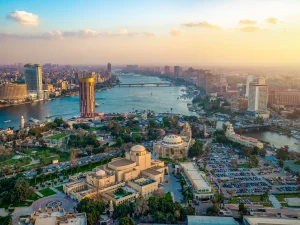Explore how the SAATM initiative is breaking barriers in African aviation, fostering economic growth, and reshaping the continent’s air travel landscape.
Imagine boarding a flight in Lagos, making a brief stop in Nairobi to pick up more passengers, and then heading straight to Cairo – all on a single ticket. This vision, once a distant dream, is inching closer to reality with the Single African Air Transport Market (SAATM) initiative.
Spearheaded by aviation authorities across the continent, including insights from Mr Ronnie Balongo of the Uganda Civil Aviation Authority (UCAA), the SAATM is set to redefine what interconnectivity means for African nations.
Breaking the Chains of Point-to-Point Travel
For decades, air travel within Africa has been constrained by a rigid point-to-point model. Direct flights between African countries are few and often expensive, deterring both business and leisure travel.
The SAATM seeks to dismantle these barriers by allowing airlines the fifth freedom of traffic rights. This essentially permits them to operate flights that pick up and drop off passengers in third-party countries not their own. It’s a game-changer that promises to transform the continent’s aviation landscape radically.
Fostering Greater Connectivity and Economic Growth
The benefits of the SAATM extend beyond mere convenience for travelers. By enhancing interconnectivity, the initiative is poised to stimulate economic growth, foster business expansion, and promote tourism across the continent.
Airlines will have the opportunity to explore new routes, thereby increasing their operational scope and potentially reducing costs for passengers. It’s a win-win situation that could see Africa’s aviation industry soar to new heights, making air travel more accessible and affordable for millions of people.
Challenges and Potential Setbacks
Despite the optimistic outlook, the journey towards a fully integrated African airspace is not without its hurdles. Regulatory challenges, infrastructure limitations, and concerns over market competition and security are just a few of the issues that need to be addressed.
Moreover, the success of the SAATM hinges on the willingness of individual countries to open their skies, a move that requires both trust and cooperation among nations with diverse interests and capabilities.
As the SAATM initiative moves forward, its implementation will undoubtedly be closely watched by industry stakeholders and travelers alike. The dream of a ‘sky without borders’ within Africa is on the horizon, promising to usher in a new era of air travel that could reshape the continent’s economic and social landscape.
Source: BNN






